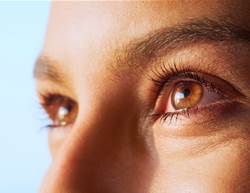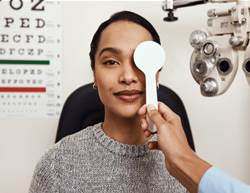Many Australians wear contact lenses, so it’s reasonable to ask whether they’re bad for your eyes. National guidance is clear: lenses are a convenient way to see well when cared for properly, but they aren’t risk free. Optometry Australia and Healthdirect both stress strict hygiene, correct fit and following replacement schedules to keep wear safe.
Used correctly, the overall risk is low. Problems usually stem from behaviours like sleeping in lenses, exposing lenses to water, stretching replacement times or topping up solution instead of using fresh. Australian ophthalmology guidance specifically warns against any water contact due to infection risks such as Acanthamoeba and recommends immediate review if eyes become red, painful or light sensitive.
Local research has also mapped the risks. Australian population studies show contact lens–related microbial keratitis is uncommon but can be serious, with incidence around 4.2 per 10,000 wearers per year and higher risk with poor hygiene or overnight wear. These data support what clinicians see in practice: good habits make lens wear safe for most people.
Are contacts bad for my eyes?
In general, contact lenses are safe. As with any medical device, problems can occur. “Compared with not wearing lenses, wearing a contact lens increases the risk of inflammation, infection and mechanical irritation on the surface of the eye,” says optometrist Dr Aaron Zimmerman. “Worn correctly, that risk can be significantly reduced.”
Ophthalmologist Dr Mohammad Dastjerdi agrees. When used properly, contact lenses are considered safe for the eyes. That means cleaning lenses correctly, ensuring they fit well and following the recommended replacement schedule for your specific lens type.
Most complications arise from risky behaviours. “Sleeping or napping in lenses, exposing lenses to water—swimming or showering with them in—failing to replace lenses or storage cases as advised and topping up disinfecting solution instead of using fresh each time all increase infection risk,” Dr Dastjerdi says. Over-wearing lenses and ignoring discomfort also raise the chance of trouble.
Many contact lens wearers do at least one of these behaviours, which is why misuse can lead to serious infections that may cause a person to lose part or all of their vision, Dr Dastjerdi adds.
Used properly, the overall risk remains very low. “There is an extremely low risk of issues when lenses are worn and cared for as directed,” says ophthalmologist Dr Stephen Armenti.
The safest way to wear contacts
The safest soft lenses are daily disposables or single-use lenses. They are sterile with no surface deposits until the moment you handle them. Always wash and thoroughly dry your hands before touching lenses to avoid transferring bacteria. Wear them through the day and remove them in the evening before bed.
If your lenses are designed for longer wear:
- Wash and dry hands before every insertion or removal
- Avoid sleeping in lenses unless specifically advised
- Empty the case each night, rinse with fresh solution and air-dry face down
- Replace the storage case every three months
- Never top up old solution
These steps significantly reduce the risk of infection or inflammation.
How long can I wear contact lenses every day?
Most people can wear contacts comfortably for 8–12 hours a day and many tolerate 12 hours or more without issues. The best guide is your eyes.
If lenses feel comfortable, your vision is clear and your eyes are not dry, red or light sensitive, it is reasonable to put them in on waking and remove them before bed.
If discomfort, dryness or irritation develops, take them out, switch to glasses and seek advice from your optometrist or ophthalmologist.
Why you shouldn’t sleep with contacts in
This is a major sticking point for eye specialists. “It is important to avoid closed-eye wear of contact lenses as overnight wear is the leading risk factor for developing inflammation and infection,” says Dr Zimmerman.
Why? Blinking matters. “Contact lenses move a little with each blink and this helps turn over the tear film between the contact lens and your eye,” Dr Zimmerman explains. That turnover helps prevent bacteria and irritants from building up where they could trigger infection.
If a lens does not allow much oxygen through (less common now), the cornea—the eye’s outer layer—can become oxygen deprived, which drives inflammation, Dr Zimmerman adds.
“Sleeping in lenses, even occasionally, increases the risk of eye infection by six to eight times compared with only wearing lenses while awake,” says Dr Dastjerdi.
Long-term effects of wearing contact lenses
Most people can wear contacts long term without issues, Dr Dastjerdi notes. Potential long-term problems—usually linked to poor habits or overuse—include:
- Chronic dry eye
- Corneal neovascularisation, where new blood vessels grow into the cornea due to low oxygen
- Increased risk of scarring after infections
- Reduced tolerance over time, making lenses feel less comfortable
“For most users, no major long-term damage occurs if they’re used properly,” Dr Dastjerdi says.
Can contact lenses improve your eyesight?
Contacts correct vision while you wear them. They do not permanently change eyesight. “When you remove them, your vision goes back to its baseline,” Dr Dastjerdi says, echoing Dr Armenti, M.D., PhD.
Contact lenses are safe when used correctly. They require consistent hygiene and responsible habits. Keep a pair of glasses as a reliable back-up.









